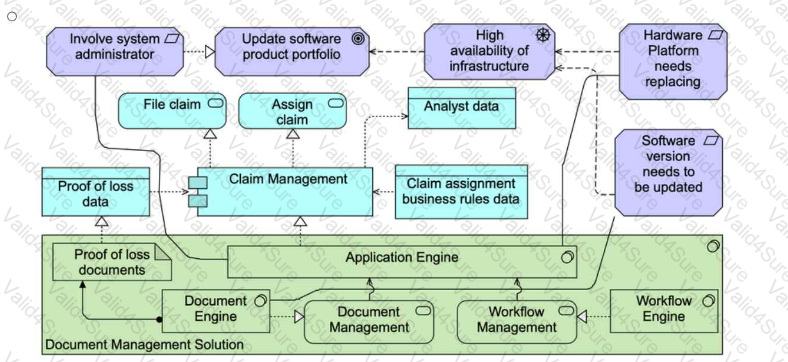Please read this scenario prior to answering the question
ArchiCar has been a market leader in the premium priced luxury car sector for the last decade. Its product leadership strategy has brought superior products to market, and enabled ArchiCar to achieve premium prices for its cars. This strategy has been
widely successful in the past, but recently competitors have been offering comparable products and taking significant market share. The governing board of ArchiCar has identified opportunities in emerging markets where the ArchiCar brand is associated
with luxury and high performance products, but is thought to be too expensive for mass-market success. Based on this assessment, the board has made the decision to setup a subsidiary company to mass-produce affordable cars locally. This will be
achieved by focusing on a strategy of operational excellence. Such a strategy is ideal for such markets where customers value cost over other factors.
To facilitate this strategic transformation, the project has been divided into multiple phases within a five-year program. The initial phase, known as "Achieving Operational Excellence," is underway. The engineering team has begun devising an action plan
to drive the necessary changes and outlining the technological conditions that must be met. The product architect has identified three current capabilities - industry-leading engineering, high-quality materials sourcing, and cutting-edge focussed R&D -
along with their contributions to the new production philosophy.
Moving forward, it has been determined that two out of the three current capabilities require revision. Materials sourcing needs to be adjusted to meet optimization demands, and R&D targets must align with future goals to enable affordable production.
Additionally, process engineering is introduced as a fourth capability to shift the company's focus from products to a process-oriented approach.
The Enterprise Architecture team has been tasked with migration planning, and identifying keywork packages and deliverables. They have identified two transition states between the current and future scenario. The first transition aims to adjust current
capabilities, including revising the R&D approach and procurement strategy. The second transition aims to shift from a product-centric mindset to a process-focused approach and adjust materials sourcing accordingly. It is important to consider existing
supplier contracts that cannot be immediately canceled during this process.
The Enterprise Architecture team has identified that the second transition must implement a process framework, in order to shift to a process focus and meet a number of requirements, including the requirement for end-to-end process thinking. As this
requirement impacts procurement processes, it also impacts the procurement strategy.
Refer to the Scenario
You have been tasked with modeling the current capabilities of ArchiCar, identifying the capabilities necessary for the company to achieve Operational Excellence, and showing the motivations behind these changes
Which of the following models best answers this?




 A diagram of a software project
Description automatically generated
A diagram of a software project
Description automatically generated A diagram of software development
Description automatically generated
A diagram of software development
Description automatically generated A diagram of software development
Description automatically generated
A diagram of software development
Description automatically generated A diagram of software development
Description automatically generated
A diagram of software development
Description automatically generated A diagram of a process
AI-generated content may be incorrect.
A diagram of a process
AI-generated content may be incorrect. A diagram of a process
AI-generated content may be incorrect.
A diagram of a process
AI-generated content may be incorrect. A diagram of a process
AI-generated content may be incorrect.
A diagram of a process
AI-generated content may be incorrect. A diagram of a process
AI-generated content may be incorrect.
A diagram of a process
AI-generated content may be incorrect. A diagram of a data processing process
Description automatically generated
A diagram of a data processing process
Description automatically generated A diagram of a software system
Description automatically generated
A diagram of a software system
Description automatically generated A diagram of a software process
Description automatically generated
A diagram of a software process
Description automatically generated A diagram of a data center
Description automatically generated
A diagram of a data center
Description automatically generated